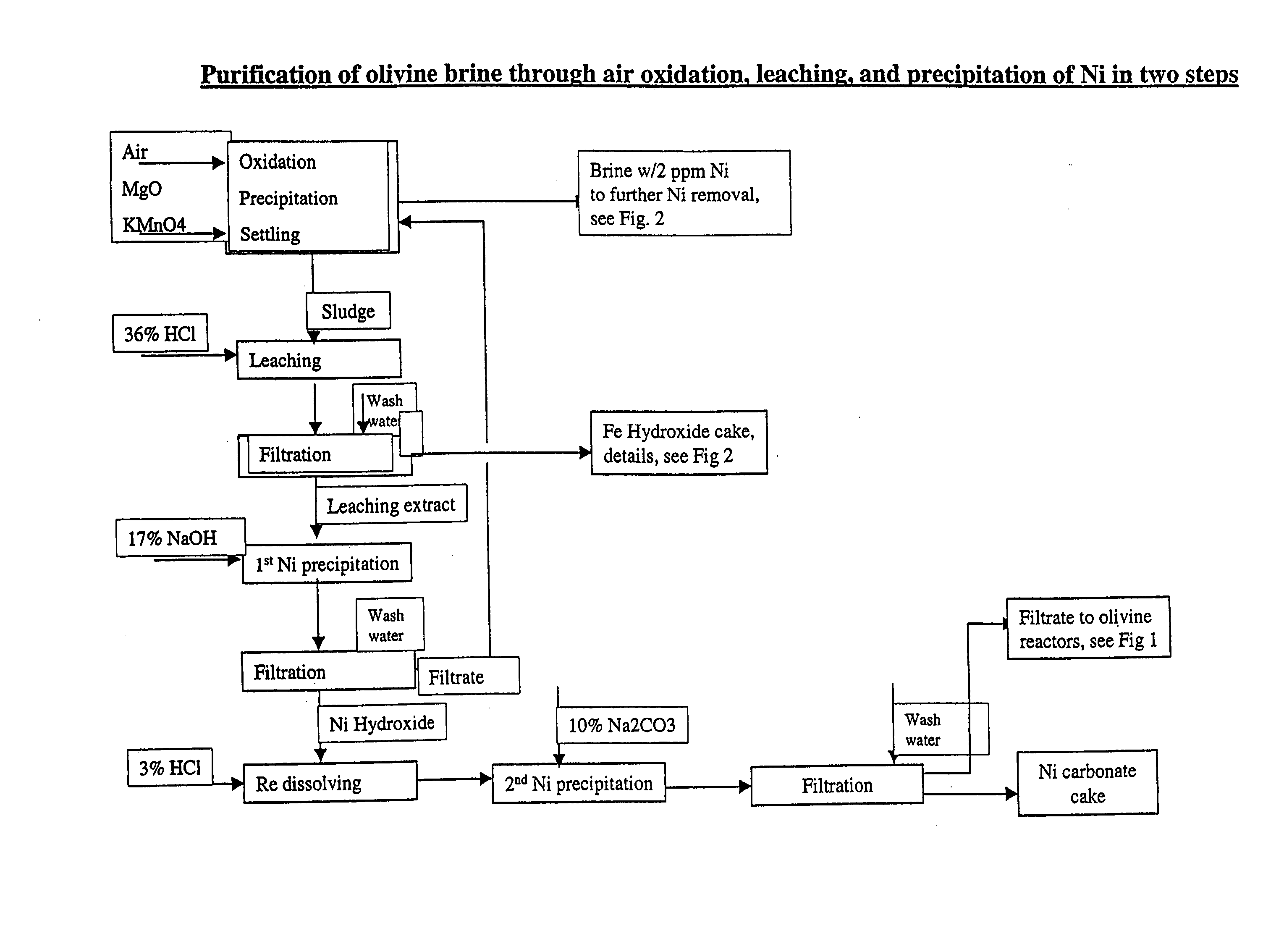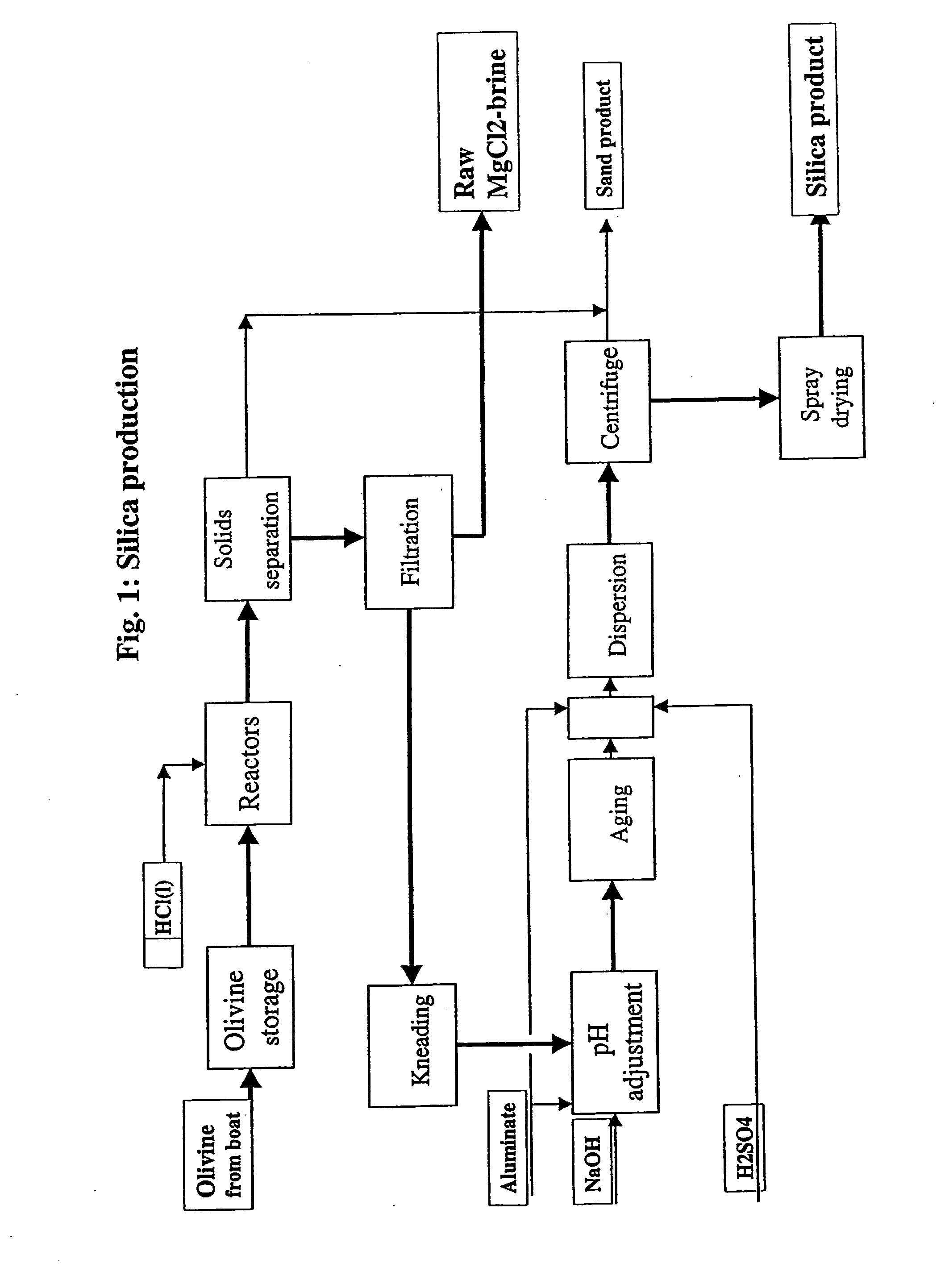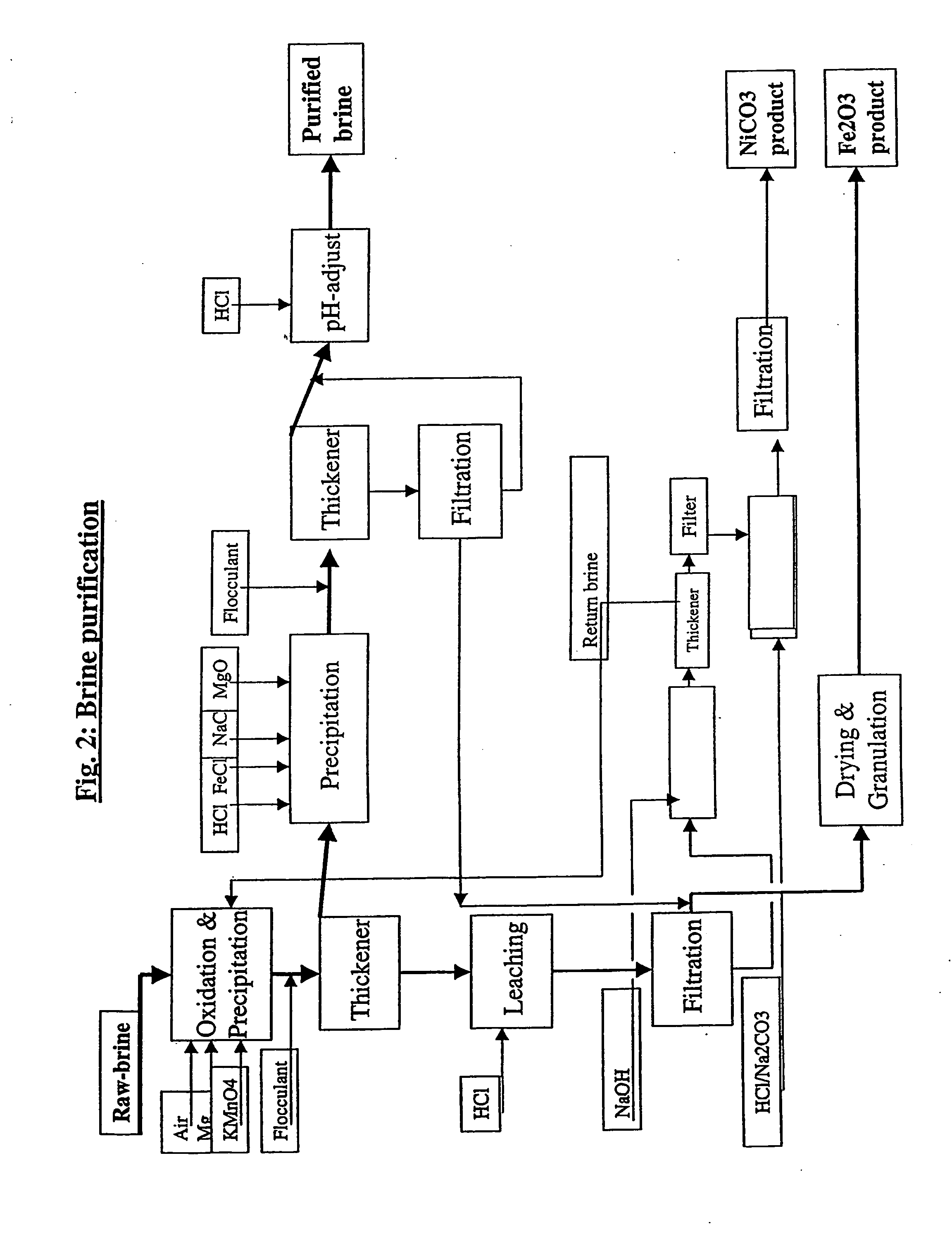Process for Complete Utilisation of Olivine Constituents
a technology of olivine constituents and olivine, which is applied in the direction of nickel carbonates, nickel oxides/hydroxides, nickel carbonates, etc., can solve the problems of high cost of waste disposal, and achieve the effect of avoiding the cost of waste disposal
- Summary
- Abstract
- Description
- Claims
- Application Information
AI Technical Summary
Benefits of technology
Problems solved by technology
Method used
Image
Examples
example 1
Oxidation / Precipitation of Iron, Nickel and Manganese
[0035] Olivine raw brine containing 22% MgCl2, 1.0% Fe, 0.05-0.06% Ni, and 1.2% HCl was treated with air and Mg(OH)2 pulp was added in various ratios to see to which extent the elements were precipitated as a function of pH. The results showed that divalent iron is easily oxidised by air at an average residence time of 50 minutes and an airflow corresponding to 3.6 times the stoichiometric amount in relation to Fe2+.
[0036] By adding base just below that corresponding to complete oxidation and precipitation of Fe hydroxide, the main compound formed was hematite, Fe2O3. By increasing the base, the more complex phase iowaite, Mg4Fe(OH)8OCl.xH2O (or related phases), was formed.
[0037] A marked reduction of the nickel content was observed, from 0.057% Ni to below 1 ppm Ni, and near the required 0.3 ppm Ni. Then the Fe / Ni mole ratio in the precipitate was lower than 20. A certain reduction of manganese was also observed. Depending on ...
example 2
Precipitation of Ni in Extract from Leaching Fe—Ni Sludge
[0039] A batch of synthetic brine containing 25% MgCl2 and 0.38% Ni was prepared. This solution was used in an experiment with continuous precipitation in two 500-ml tanks. The residence time was 15 minutes per tank. Brine and 17% NaOH were fed to the first tank.
[0040] pH(dir) in the first tank varied between 5.5 and 5.8. The Ni concentrations in filtered samples decreases with increasing NaOH addition, and flatten out around 0.02% Ni (Fig. E2.1). There was a tendency for decreasing Cl in the precipitate with increasing base addition, indicating that Cl is replaced with OH. At the same times there was a tendency for increasing Mg content; however, not as high as that measured when precipitating Ni hydroxide in the less concentrated leaching extract (3% MgCl2 and 0.15% Ni) based on washed Fe—Ni cakes.
[0041] It was of interest to look closer into the effect of brine concentration on the settling and filtration properties; esp...
example 3
Precipitation of Ni Carbonate in Chloride Solutions
[0044] Several tests were carried out in order to check if nickel could be precipitated as carbonate. In some reference works the Ksp values for MgCO3 and NiCO3 are not very different, and it is not clear which of them is the lowest, i.e., which of the carbonates is likely to precipitate first.
[0045] By dissolution of Ni hydroxide from the first precipitation (in 25% leaching extract), a mole ratio Mg / Ni of 0.2 could be expected. In the following experiment one decided to use a more conservative value of 0.3, and a 10-kg batch with the following composition was prepared (added as chlorides): 2.0% Ni, 0.248% Mg−>mole ratio Mg / Ni=0.30
[0046] Two 500-ml reactors were placed on magnetic stirrers and the inlet streams of nickel solution and 10% Na2CO3 were started corresponding to a residence time of 27 minutes in each tank. A temperature of 80° C. was established as the tanks were filled. The Na2CO3 addition was increased from 90 to 1...
PUM
| Property | Measurement | Unit |
|---|---|---|
| Percent by mass | aaaaa | aaaaa |
| Percent by mass | aaaaa | aaaaa |
| Volume | aaaaa | aaaaa |
Abstract
Description
Claims
Application Information
 Login to View More
Login to View More - R&D
- Intellectual Property
- Life Sciences
- Materials
- Tech Scout
- Unparalleled Data Quality
- Higher Quality Content
- 60% Fewer Hallucinations
Browse by: Latest US Patents, China's latest patents, Technical Efficacy Thesaurus, Application Domain, Technology Topic, Popular Technical Reports.
© 2025 PatSnap. All rights reserved.Legal|Privacy policy|Modern Slavery Act Transparency Statement|Sitemap|About US| Contact US: help@patsnap.com



